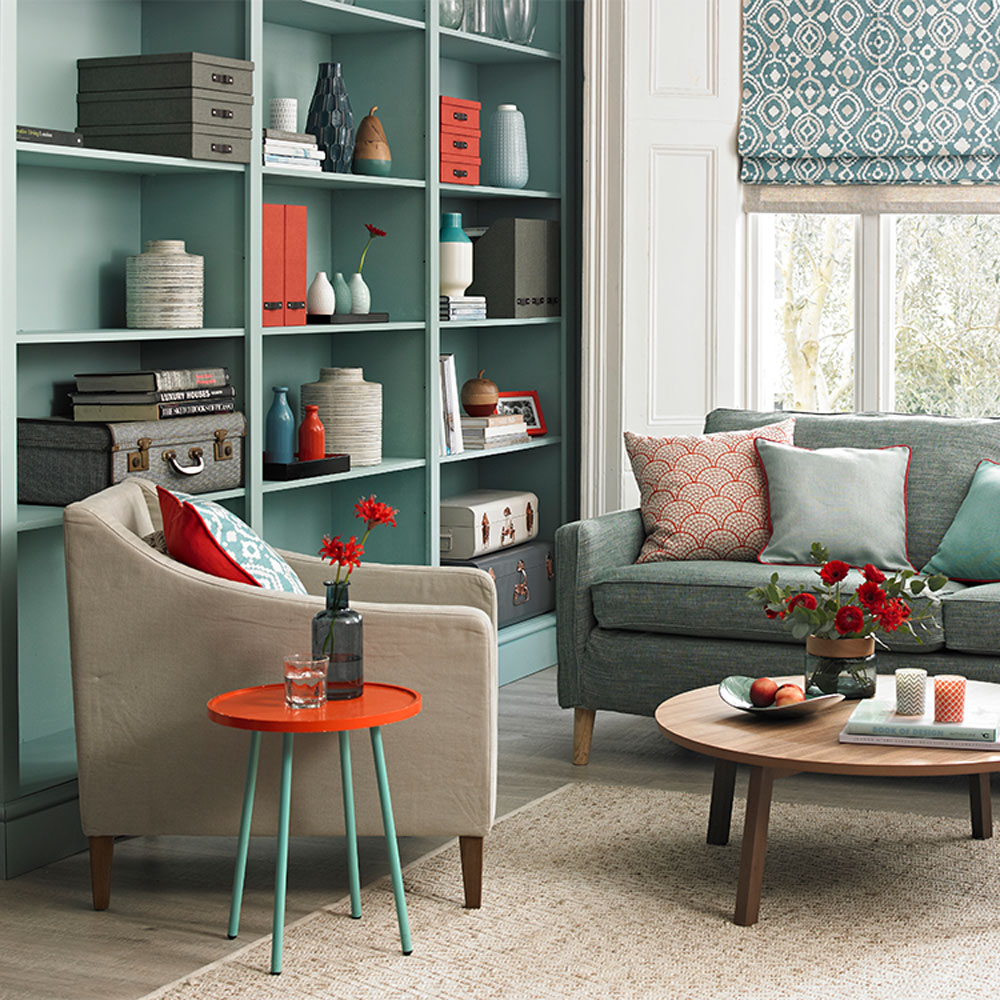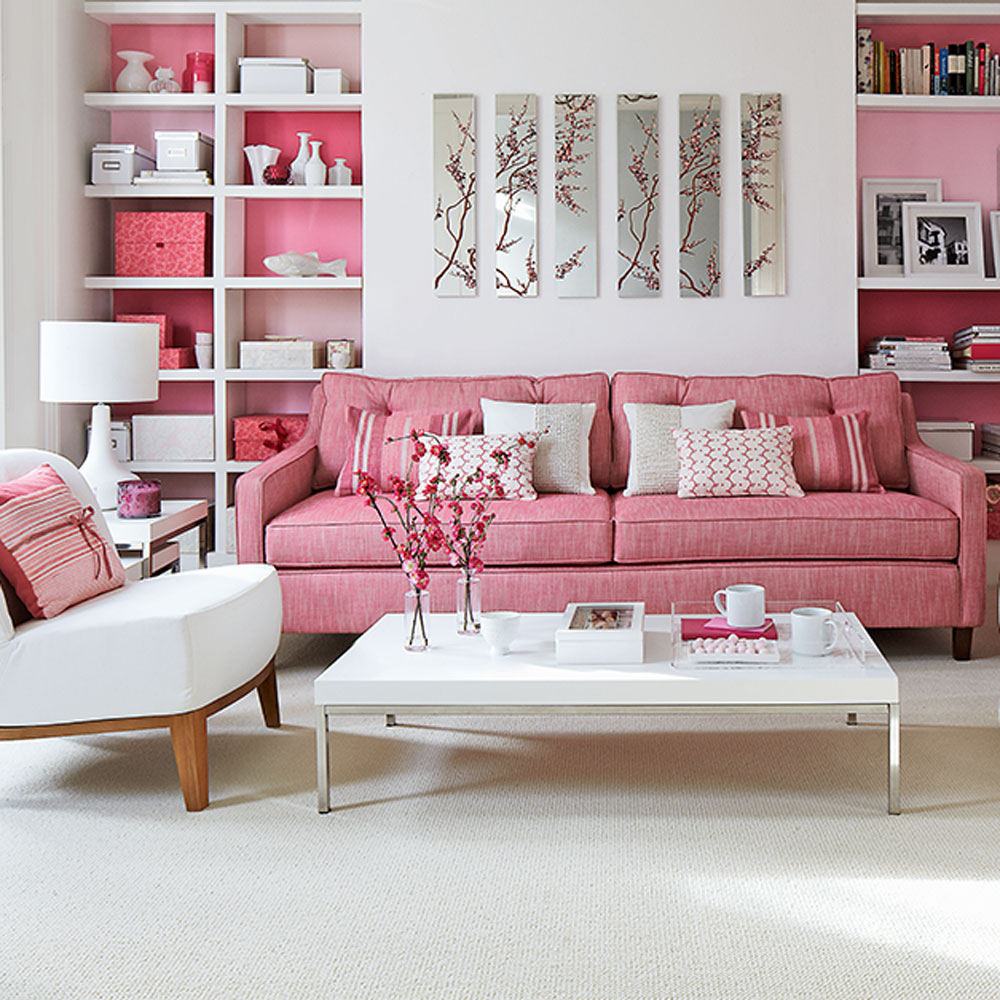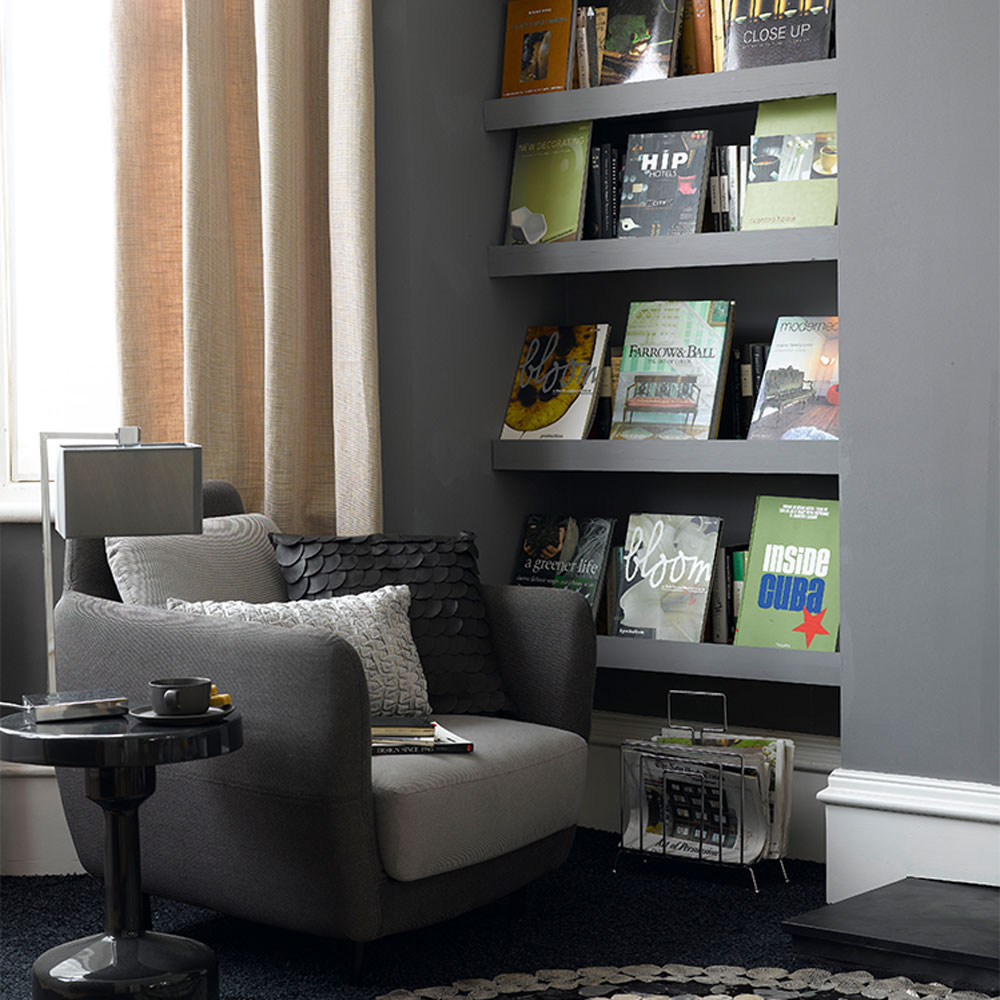Living room shelving ideas – 10 creative ways to sort, store and organise
Bring order to your space with stylish living room shelving ideas and solutions

Living room shelving ideas are a brilliant way of working more storage into a key space where it’s often lacking. Living rooms are where we want to wind down and relax, but it can be hard to switch off if we’re faced with crammed shelves and cluttered surfaces. Instead turn your wall shelves into a creative living room wall decor idea.
Off-the-peg shelving is an easy and often inexpensive option that can be worked into a living room scheme without too much upheaval. From sleek floating shelves or simple wooden shelves on brackets, fixing up a row of shelves shouldn’t be beyond the skills of most competent DIYers.
Freestanding shelving units are another option that offer extra storage space for bulkier items such as TVs and media equipment and can often be slotted into alcoves or work as a standalone piece.
Living room shelving ideas
As an alternative to off-the-peg shelving and freestanding pieces, made-to-measure living room wall shelves and fitted furniture offers a bespoke solution tailored to more specific needs or size of room requirements.
‘The demand for custom built and fitted furniture is on the rise and mirrors the shift in priority towards making our homes work as hard as they can for our changing needs' says Rachal Hutcheson at Sharps.
‘As well as providing storage for books and decorative accessories, fitted living room furniture can help to house TV and audio equipment; efficiently hiding unsightly cables and mounts. While integrated lighting solutions can be discreetly fitted under shelves or into cupboards, creating mood lighting for cosy spaces and task lighting for working areas.’
1. Choose bespoke built-ins in a complementary colour

Finding off-the-peg living room storage to fit a specific space can be tricky if you have an awkwardly-shaped living room. Opting for made-to-measure shelving allows you to design a piece of furniture that’s the perfect fit and is tailored to your specific requirements.
Get the Ideal Home Newsletter
Sign up to our newsletter for style and decor inspiration, house makeovers, project advice and more.
Fill a narrow spot in a small living room with a neat run of cubbyhole shelving. Painting it to match the wall colour will help it blend in and make the space feel bigger. Style up shelves with pieces in punchy colours to match your decor and arrange the height of shelves so they are slightly taller than the height of the tallest item you’ll be storing on them.
‘If you want your furniture to be a specific size, style, finish or fit, you'll want to buy bespoke,’ say the design team at Jali. ‘ Bespoke or made-to-measure furniture is made for you, rather than being mass produced and will add more character to your living space.’
2. Keep wall shelves in order with easy-grab baskets

A line-up of open shelves makes a great easy-access option for a family living room, with plenty of space to stash books, toys and games. Arrange so that little ones can reach their things easily, with children’s belongings on lower shelves and grown-ups’ things higher up.
Combine tall and short shelving to fill wall space and leave an open area for display. And keep open shelves neat and orderly by adding a few woven storage baskets or fabric tubs where you can stash smaller odds and ends and keep clutter hidden out of sight.
‘If shelves are so full that it puts you off giving them a regular dust, then you might have gone overboard with the knick knacks,’ says professional organiser, Vicky Silverthorn at Youneedavicky. ‘It’s easy to get carried away buying more things, but too much clutter looks untidy and the less you have out, the easier it is to keep clean.’
3. Create a living room display wall

Easy-up floating shelves are an inexpensive but stylish option for living room shelving ideas. Create a whole wall of storage with a stack of longline floating shelves running the entire width of one wall.
Start by positioning your first shelf at roughly tabletop height. It can be used for display, but also double up as a resting surface for a lamp or cup of tea when positioned next to a sofa or armchair.
Keep open shelves orderly by including a couple of lidded boxes and baskets amongst your display items. Use these to corral small-scale clutter so that surfaces don’t look messy or become a magnet for dust.
4. Integrate a TV into your living room wall decor

TV storage is a must in most living rooms, but can be tricky to get right. Modern flat-screen TVs tend to be fairly large and can dominate a room if you’re not careful.
Try incorporating the TV into your scheme by creating a whole wall of living room shelving and media storage combined. Set against a dark backdrop, the TV blends into the decor and isn’t so dominant and overpowering. A mix of open and closed shelving gives space for display plus somewhere to hide the less-than-lovely stuff.
‘If you’ve invested a significant sum of money sourcing the best TV for your budget, then the most prudent way to get the most from it is by taking the same care and attention in housing it,’ says Rachal Hutcheson, National Retail Manager at Sharps. ‘Made-to-measure furniture ensures you make best use of available space and tailor it to your unique requirements.’
5. Squeeze shelving into an alcove

Alcoves either side of a chimney breast are a prime spot for introducing some extra living room shelving. If the alcoves are a standard size, such as 80cm or 100cm in width, then off-the-peg floating shelves are an inexpensive option either in white or a natural wood finish.
Non-standard sized alcoves will require built-in shelving rather than shop-bought. DIY shelves are a fairly simple project for a competent DIYer, or for bespoke shelving, consider using a carpenter or fitted furniture company.
Choose chunky shelves in a natural wood finish for a rustic country-inspired look or opt for classic white shelves that will complement most room styles. For a bespoke look, consider painting shelves to match wall colour in a bold tone or soft neutral - it will make shelves look as if they have always been there.
6. Make space for a line of books

If you own lots of books but are running out of space to store them, why not utilise wasted wall space above a living room sofa? A great option for high-ceilinged rooms, try running a full-width shelf on one, or all of the walls.
Position shelving at a low-enough height so that you can reach books easily, but high enough above a sofa so that you won’t hit your head when getting up. Use low-tack painters tape to mock-up the height of your shelf so that you can test it before putting it up.
7. Go pink to make shelves pop

Make bespoke built-ins the focal point of your living room with a bold colour block treatment. White shelves will stand out against a bright background and it’ll also draw attention to the items on display and make them pop too.
Use the same colour all over to give a bold contrast backdrop or use varying tones of the same colour to create an ombre effect. Match your background colour to living room furniture and soft furnishings for a chic, colour co-ordinated effect.
8. Slot narrow shelves into a gap

Make use of narrow alcoves or wasted space in-between cabinets by building in a set of slimline shelves – a great solution for decorating the wall behind the sofa. A depth of between 15-20cm is wide enough to hold narrow books and can be used as a display area for ceramics, pictures and favourite things.
Paint shelves to match wall colour to create an integrated look and pick display items in toning colours to complement living room decor. Arrange shelves by starting with books and larger items first. Then add artwork towards the backs of shelves, layering in smaller decorative items at the front.
9. Upgrade flat-pack shelving

Sturdy cube shelving is an inexpensive option that can house all manner of living room essentials. Give a standard Ikea piece a high-end look with a few luxe add-on items.
Adding a pair of inexpensive clip-on lights (one at each end) gives a bespoke look and will illuminate decorative items displayed on shelves. Bring order to open shelving by investing in coloured storage boxes, fabric baskets and smart box files that can be slotted in and used to hide away any non-decorative pieces.
10. Go dark with painted picture shelves

Make use of an empty alcove by adding floor-to-ceiling shelving for storing favourite books, pictures or album covers. Consider this a decorative alternative to a living room wallpaper idea. DIY shelves are an inexpensive option and adding a lip on the edge will prevent items slipping off when displayed front on.
Paint shelves to match walls in a dark, matt finish to give a polished, seamless look. It will make shelves blend in and look like part of the architecture and make the items on show stand out more against a dark backdrop.
What can you put on shelves in a living room?
On a practical level, shelves are most-often used for storing books and media kit (such as DVDs, CDs and games). A library of books will look eclectic and colourful and won’t need much arranging, unless you choose to arrange by colour, size or alphabetically. Media kit can look a little messy out on display, so it’s a good idea to store discs and games equipment in fabric-covered boxes if they are going to be out on open shelves.
Decoratively speaking, shelves can be styled up with all manner of items. Ceramics and glassware will add colour and pattern to shelves, alongside art work, pictures and family photographs. While plants and greenery are super-popular at the moment and are a great way of bringing life and colour to open shelves. The choice is yours.
How do you arrange shelves in a living room?
Always start with the larger items first, such as tall vases, baskets or art work. Arrange these towards the back of your shelves and then introduce smaller items, layering them in front of taller items and varying them in terms of shape, size and colours.
Books are a great way of bringing balance to shelf displays. Mix it up by positioning books vertically and then with a few stacks positioned horizontally here and there. Stacks are a great way of giving displays extra height, by placing smaller items on top of your stacks.

Lisa is Deputy Editor of Style at Home magazine and regularly contributes to sister title Ideal Home. She has written about interiors for more than 25 years and about pretty much every area of the home, from shopping and decorating, crafts and DIY to real home transformations and kitchen and bathroom makeovers. Homes and interiors have always been a passion and she never tires of nosying around gorgeous homes, whether on TV, online, in print or in person.
-
 The 6 outdoor lights from Habitat that I'm choosing between to make my outdoor space look more expensive this summer
The 6 outdoor lights from Habitat that I'm choosing between to make my outdoor space look more expensive this summerI couldn’t believe some of the prices
By Ellis Cochrane
-
 Joseph Joseph 3-piece Saucepan review – seriously space-saving
Joseph Joseph 3-piece Saucepan review – seriously space-savingSmall kitchen? I tested this innovative Joseph Joseph space-savvy set which has foldable handles — and I loved it
By Annie Collyer
-
 Forget seating, this is how you should be making the most out of your kitchen island in 2025
Forget seating, this is how you should be making the most out of your kitchen island in 2025Seating doesn't always have to be a necessity on an island when you can choose these ideas instead
By Holly Cockburn